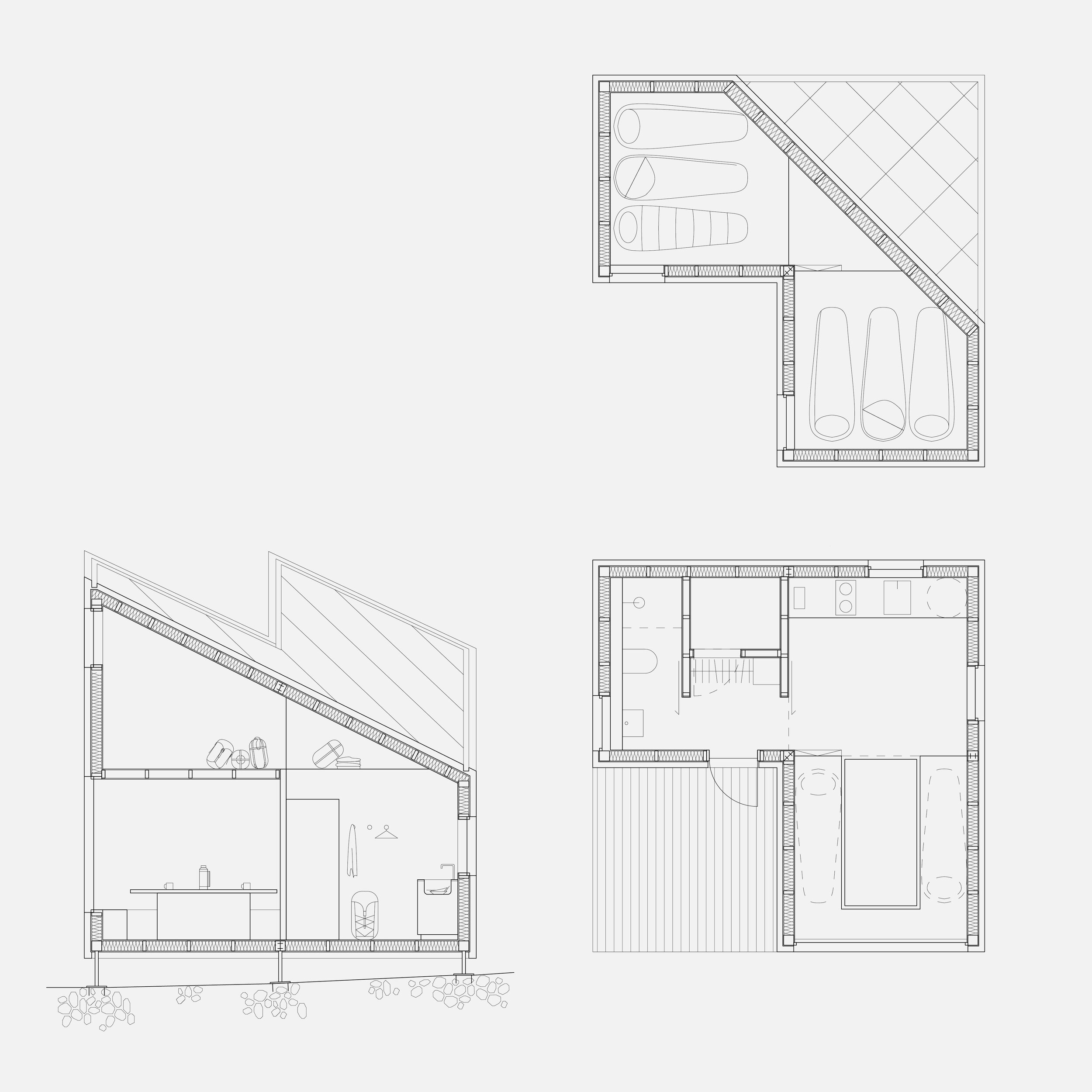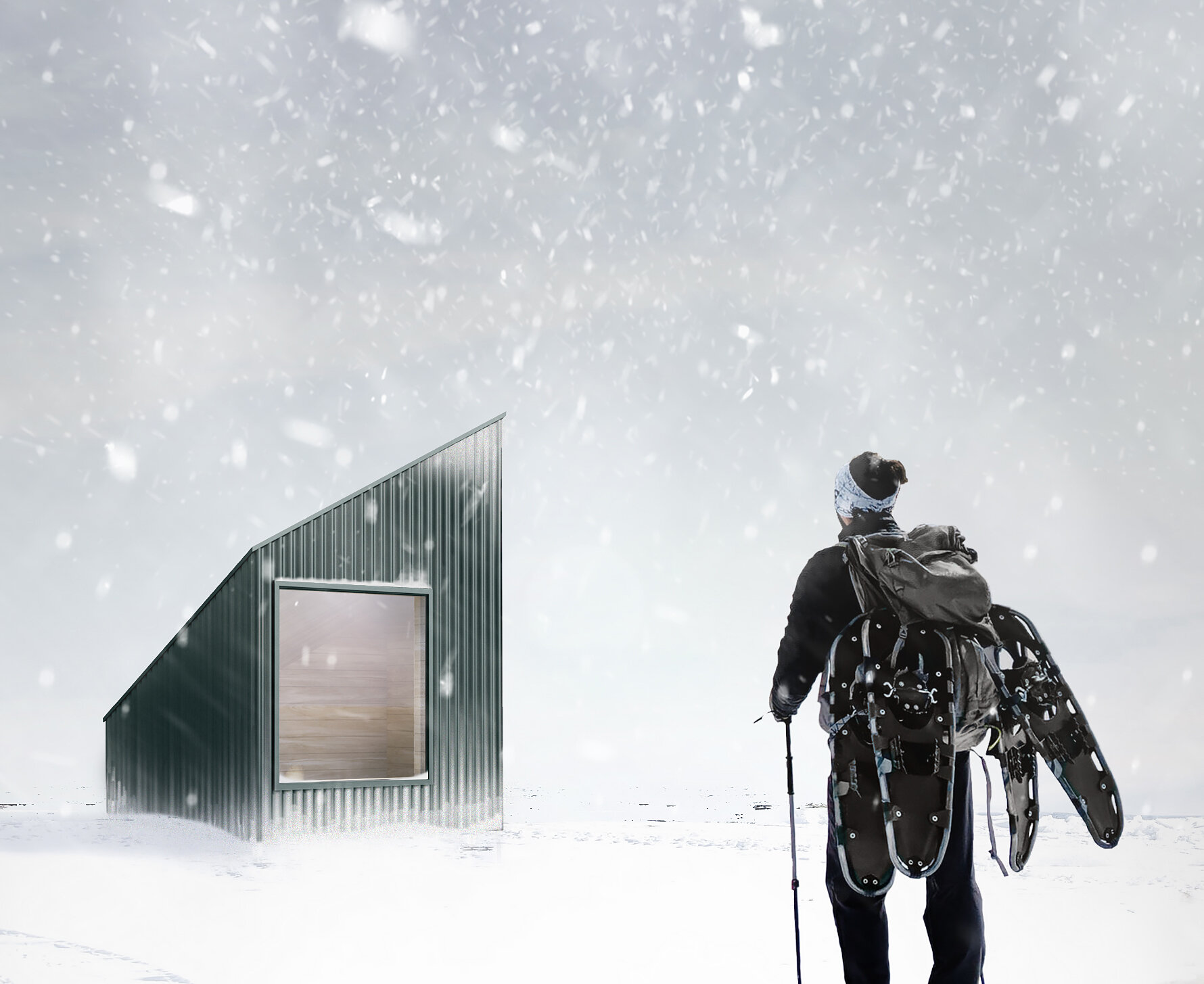House for the heart
Location: Iceland Year: 2020 Type: Design and research project Program: Trekking huts Status: Ongoing
Collaboration: Structured Environment Funding: Icelandic Technology Development Fund (Tækniþróunarsjóður)
Everyone who uses the great outdoors for recreation has experienced how good an effect it has on the body and soul. The magic of nature, fresh air, physical activity — to make it to the mountain top, cross rivers and test ones own limits. Walking in a wilderness that seems endless until you catch a glimpse of your destination for the night. The house is a framework around this experience: to be in a group of friends or alone with the nature. To reach a place to rest, eat, rejoice and sleep after conquering the challenges of the day. A house for the heart.
House for the heart is an initiative of ESJA, realised with financial support from the Icelandic Technology Development Fund (Tækniþróunarsjóður) and is executed as a design project, or research through design. The project is carried through in collaboration with the Japanese-Danish engineering company Structured Environment.
Iceland has an energy grid that supplies clean energy to most of the country, but it is not often feasible to connect to the grid when building freestanding buildings in remote locations. Therefore this project is an exploration of building off-grid trekking cabins in the Icelandic wilderness. The objective is self-sufficiency regarding energy, water and sewage — while keeping disturbance to the sensitive nature to an absolute minimum.
The use of local materials is explored in the project, although building material supply is scarce in Iceland. The house is designed as a modular system , that can be prefabricated and air lifted on site using a helicopter. The structure and interiors are made from Icelandic timber and the insulation is made from sheep wool. Facade cladding options are also materials found in Iceland, most interestingly a repurposed plastic facade using fish containers from Icelandic fishing industry, a material that otherwise is shredded and tossed to landfill.
Heart house
Heart house is made up of three modules, and can accommodate up to eight people. The house is wind powered, and when supplemented with solar it can offer a reliable hot water supply for visitors, including a hot shower. Electricity is supplied for cooking, lighting and charging and the house is equipped with a compost toilet. A small ethanol fireplace supplements heating up the house.
Half a house
Half a house is made up of two modules and can accommodate up to four people. The house is wind powered, and offers a water supply, including a limited amount of hot water. Electricity is supplied for cooking, lighting and charging and the house is equipped with a compost toilet. A small ethanol fireplace heats up the house. The system can be downscaled to only offer cold water, toilet and electricity.
Diamond house
Half a house is made up of one module and can accommodate up to three people. The house is merely a shelter, with no mechanical installations. The house is insulated and prepared for natural ventilation. One large window allows visitors to enjoy the view, all the while helping the sun radiate inside, heating the shelter passively.
A scaleable off-grid strategy
Wind power is the main source of energy, but can be supplemented and interchanged with solar panels to adjust the amount of energy produced. The small and quiet wind turbine, produced by Icelandic startup Icewind, is placed on terrain. The energy produced is used for cooking, running a heat pump and to charge devices.
Rainwater is the water source for the cabin, and the mono-pitched roof is shaped to easily direct all the water from the roof to a single point. A compost toilet is a low tech and environmentally friendly toilet solution.
The strategy can be adjusted within the same house frame depending on need — whether reducing the cost is the objective, or ensuring the most comfortable environment for the visitors.















